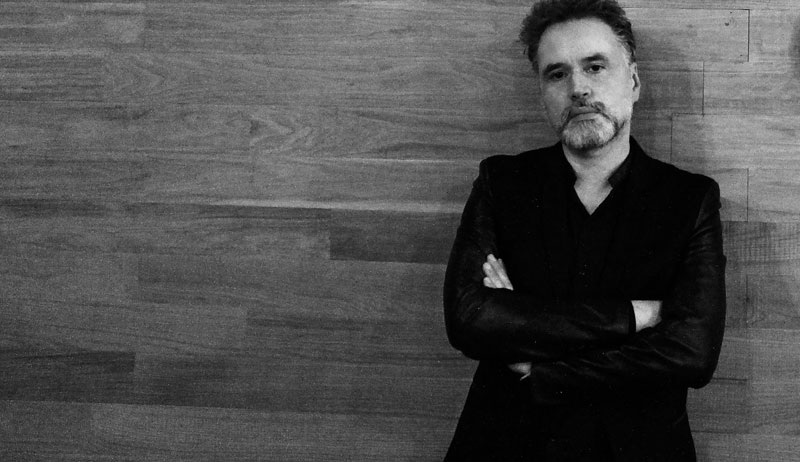Google’s first ever regional head of creative agencies, Alex Brunori, talks integration and content with Iain Akerman

“My job is to consult with creative agencies, to really make their ideas the best they can possibly be,” says Alex Brunori, Google’s first ever head of creative agencies for the Middle East and North Africa. “[But] Google is not a creative agency, and it doesn’t want to become one.”
Brunori is sitting in a glass meeting room overlooking Dubai Internet City’s manmade lake. He appears calm and relaxed. And who wouldn’t? A quick tour of the office reveals a scaled-down version of Google’s Mountain View headquarters in California, replete with cafés serving free food and drink, a gaming arcade, and a long line of beautifully designed telephone booths masquerading as video conference rooms. There’s even table tennis and a variety of working spaces designed to fit an individual employee’s mood. No wonder the tech giant has celebrated its sixth year at the top of Fortune magazine’s ‘100 Best Companies to Work For’.
For Brunori, it’s all relatively new. He left Publicis Middle East, where he was regional executive creative director, in July and took up his new position at Google in August. Although the head of creative agencies role has existed in other markets around the world for a number of years, it’s a first for the region, with Google looking to build relationships with creative agencies in the same way it has done with media agencies.
His remit at the internet giant is relatively simple: to work with ad agencies to create the best work possible. This is to be achieved through the use of insights and data, with Brunori working with agencies on strategy and execution as well as consulting on content and channels.
“For me, the first period is about getting to know the brand and products,” says Brunori of his first few months at Google. “Then it’s about creating the offering, since the role is new. It’s about structuring the relationship with the agency before going to the agencies. Planning what to offer them, how to offer it, how to partner with them to achieve the best results. So there was a lot of strategy planning on my side before going public.”
For agencies, questions will undoubtedly surround what that offering will consist of; how it will differ to what they already have access to; and how the success of any potential partnership will be measured.
“Ultimately, the goal is for the industry to do amazing work that the whole world can admire,” says Brunori. “Google is the natural born partner for creative agencies because we start from insights and data, and that can really fuel the best strategic process in creative agencies. We look at data from a different point of view and can bring this knowledge to creative agencies, so it starts with a strategy, then we can offer a lot of other things during the creation of a campaign – digital knowledge, the approach to channels, and especially now content, which is the most important thing for brands and agencies. And I think there is not only interest about content, but sometimes a lack of knowledge on how to approach content.”
At present Brunori is a lone ranger, although he is in the process of hiring another team member. Whether the team will expand further will depend on the impact he has, although there are questions over how that impact will be measured.
“That’s been a question mark we’ve faced,” admits Brunori. “We don’t measure this role by numbers, we measure it by impact, and the impact is measurable by the amount of great digital campaigns that will surface in the coming months and years.
“We are at the core of technology and creativity can be fuelled by technology. There are some ideas that you see around the world that are amazing and are born out of the partnership with creative technologists. Campaigns today have to be digital first. It’s not about the quantity, it’s about the quality, it’s about the thinking. If you think digital first, it can live on any medium. If you think the other way – if you separate digital from non-digital – you already know what you will be doing. You will be doing a limited campaign.
“I would also love to not talk about digital. I don’t want to separate digital from non-digital. A campaign is a campaign. But we can enhance integration using digital channels in the best possible way.”
For Brunori, it’s all about integration and content, with an important question being: how will the work change if his role is to make creative agencies’ ideas the best they can possibly be?
“It’s a question that touches the core of the challenge,” he says. “In a few months or years from now, it would be great to see great ideas reach more and more people in the right way. Sometimes you have amazing ideas in advertising that get lost because they aren’t distributed in the right way. And other times there are concepts that don’t reach their maximum potential just because they haven’t been researched enough. What we can do with creative agencies is start with the right insight that can spread and diffuse [a campaign] to far more people, and then make the campaign really impactful and relevant. It’s like shortening the distance between brands and people. And shortening the distance between ideas and people.”









